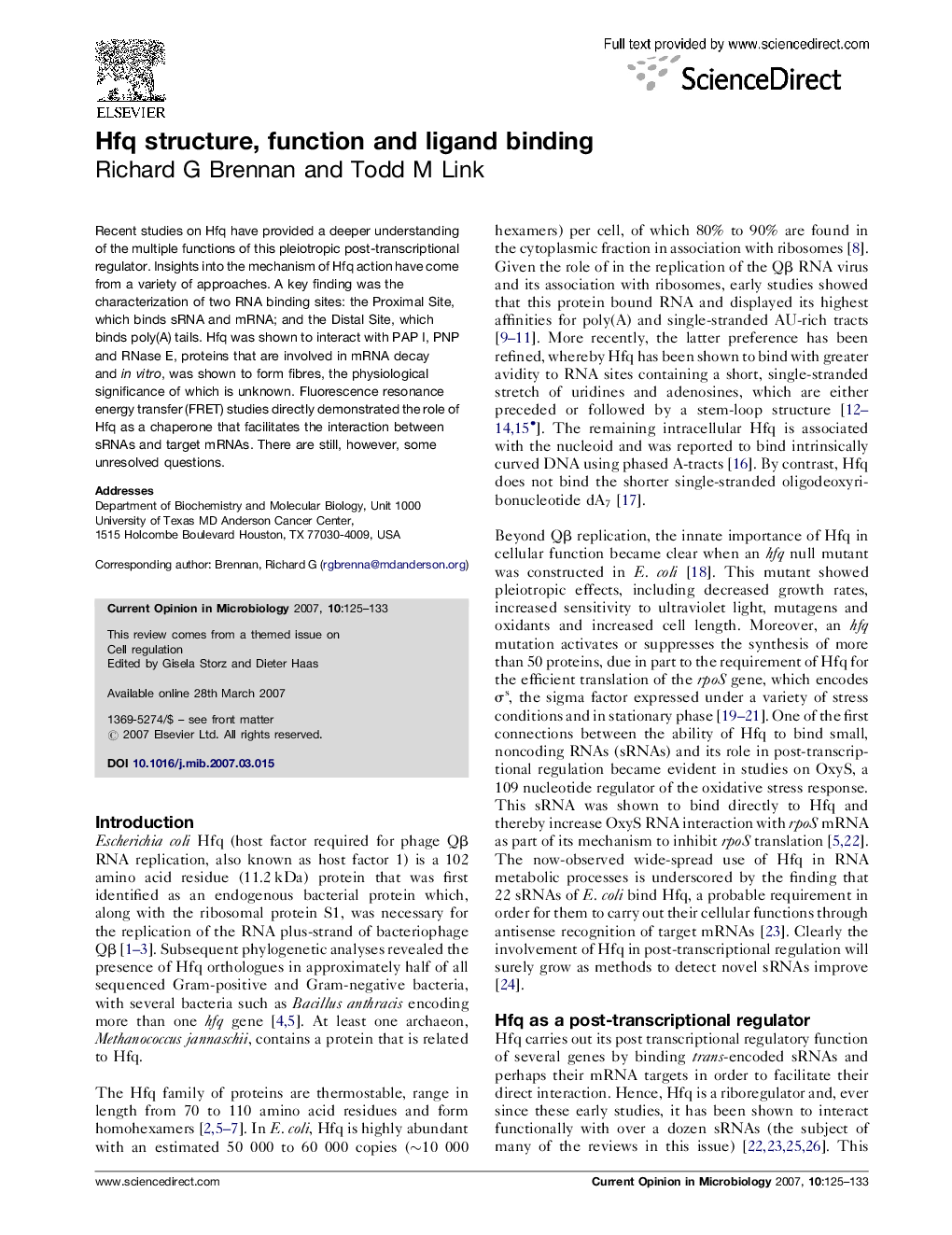| Article ID | Journal | Published Year | Pages | File Type |
|---|---|---|---|---|
| 3399476 | Current Opinion in Microbiology | 2007 | 9 Pages |
Recent studies on Hfq have provided a deeper understanding of the multiple functions of this pleiotropic post-transcriptional regulator. Insights into the mechanism of Hfq action have come from a variety of approaches. A key finding was the characterization of two RNA binding sites: the Proximal Site, which binds sRNA and mRNA; and the Distal Site, which binds poly(A) tails. Hfq was shown to interact with PAP I, PNP and RNase E, proteins that are involved in mRNA decay and in vitro, was shown to form fibres, the physiological significance of which is unknown. Fluorescence resonance energy transfer (FRET) studies directly demonstrated the role of Hfq as a chaperone that facilitates the interaction between sRNAs and target mRNAs. There are still, however, some unresolved questions.
